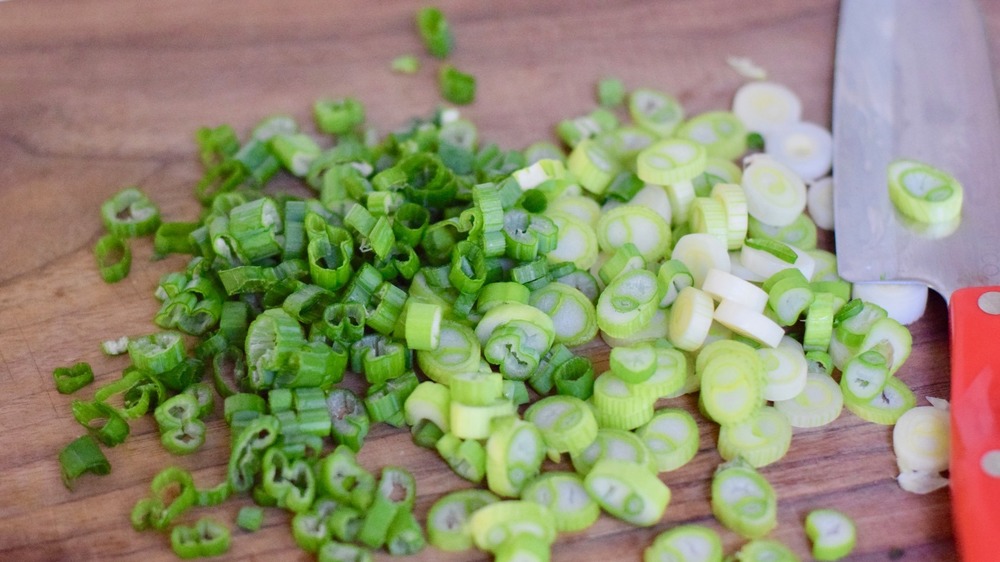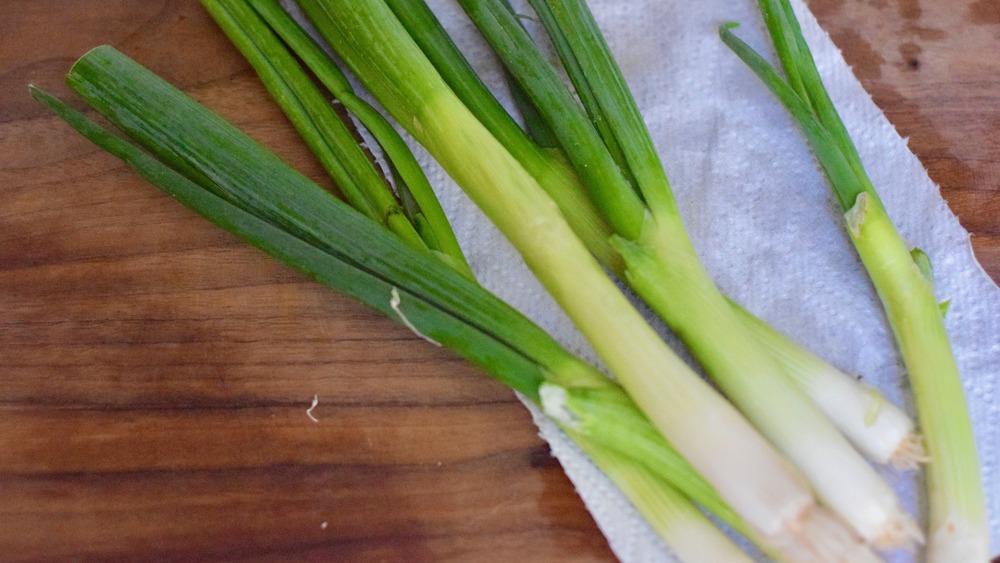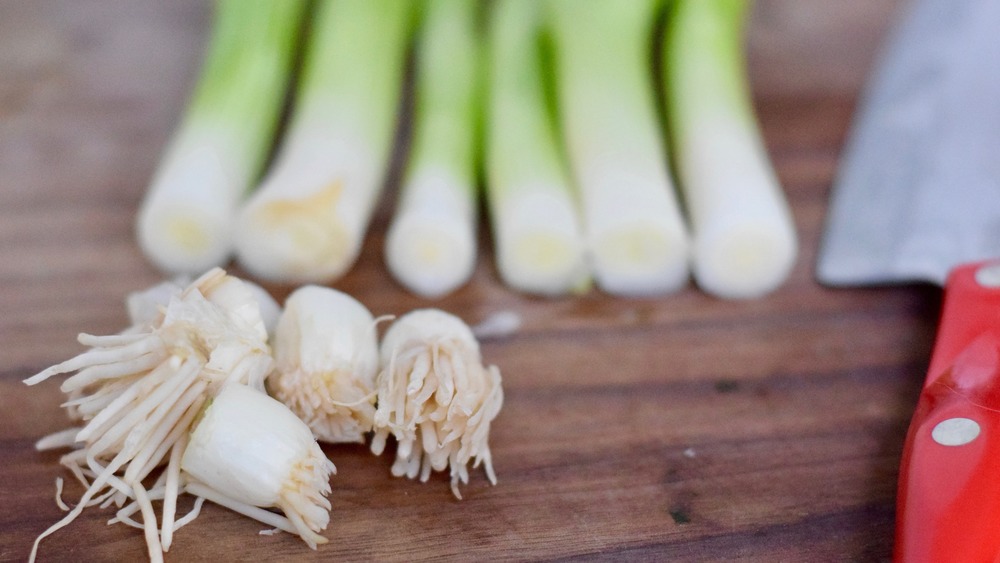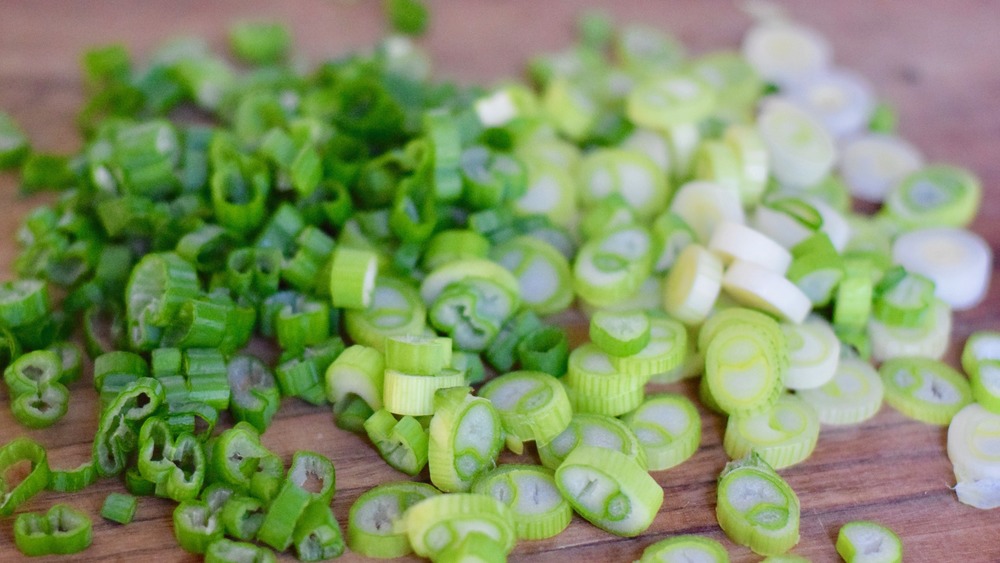How To Cut Green Onions
The process of cutting green onions is actually quite simple, especially when compared to some other herbs and vegetables. The greater question lies in the difference between scallions, green onions, and spring onions. Truth be told, they're all the same thing—the only difference is the age at which they are harvested.
Scallions are the youngest, and they have the thinnest bulb, often referred to as the "white part" or base. Green onions are harvested slightly after scallions, making their bulbs a little bit bigger. To be honest, most people can't tell the difference between a scallion bulb and a green onion bulb. Both are sold commonly at grocery stores. Last but not least, there are spring onions. Spring onions have very round, plumb bulbs and are most often found at farmers markets.
Enough about the age of green onions, though, let's learn how to cut them! Chef Tara Rylie of RylieCakes walks you through three easy steps below so that you'll be cooking with green onions in no time!
Rinse and pat dry
Give your green onions a good rinse before using by simply running them under sink water. Then, set them on your cutting board and pat dry. Only rinse the amount of green onions you plan to use for whatever it is you're making. Though you can store green onions pre-cut, they will last up to a week longer when stored whole.
The best way to store whole green onions is to wrap them in a dry paper towel and then place them into an airtight container or Ziploc bag. The best way to store pre-cut green onions is to line a small airtight container with a dry paper towel and then place the cut onions inside. Whether your onions are whole or pre-cut, they should be kept refrigerated until ready to use.
Cut off the roots
After rinsing your green onions, you're ready to start chopping. First things first, remove the roots.
A few things to note here: Some chefs do, in fact, eat the roots of green onions. Just make sure you wash them very well, as they tend to carry a lot of dirt. They did come straight out of it, after all. The roots have more of a subtle onion flavor, and in our humble opinion, they are best fried. They taste great crunchy and are perfect for topping off any dish or dip. Plus, it'll impress your guests!
You can also save the roots and place them in a small jar with the roots facing down. Keep them moist and in a window sill for light. After a few days, you should have some fresh green onions sprouting out of the roots!
Use a rocking motion
Using a rocking motion with your knife, slice your green onions to your desired thickness. The top, greener portion of the onion is the most mild in flavor and is great for topping off your favorite dishes and dips. It can be eaten raw, as it's onion-y flavor isn't too strong. The bottom, white portion of the onion has much more of a fierce onion flavor, and therefore, most people prefer it cooked to help mellow it out a bit. However, it too can be eaten raw and has a great, natural crunch to it. It's perfect for salads or heavier dishes that can take more of punch (think cream-based soups and sauces).
How to cut green onions directions
The process of cutting green onions is actually quite simple, especially when compared to some other herbs and vegetables.
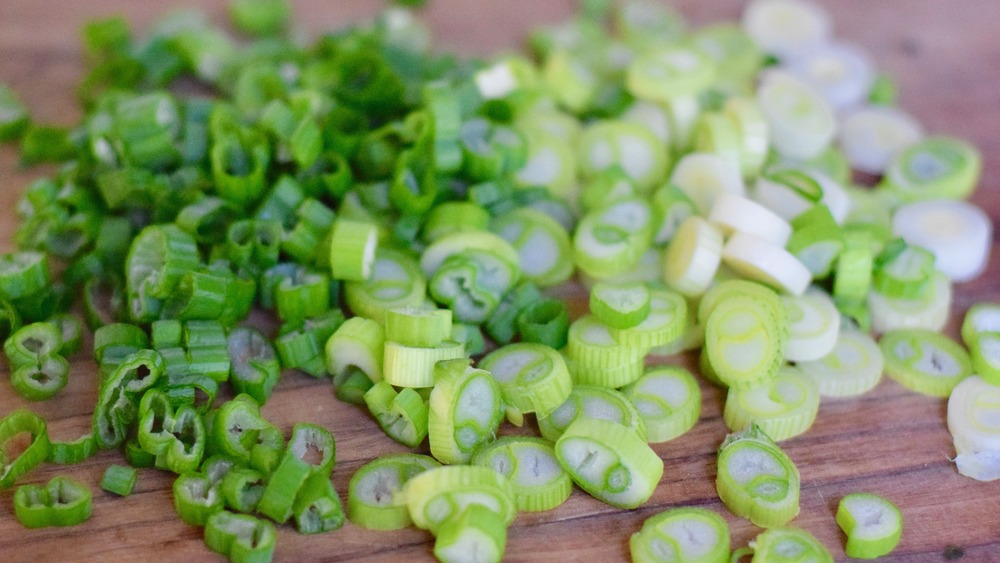
Ingredients
- Green onions
- Sharp knife
- Cutting board
Directions
- Rinse green onions and pat dry.
- Cut off roots.
- Using rocking motion, slice green onions to desired thickness.
